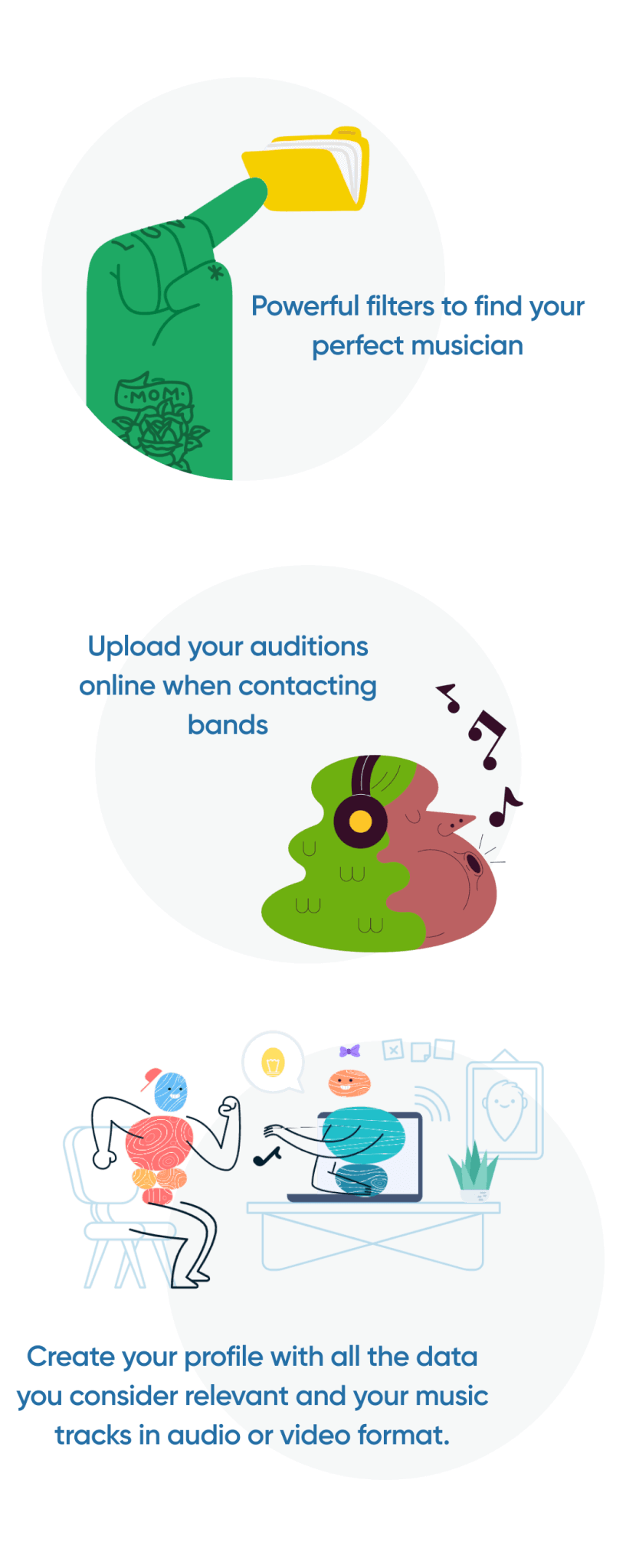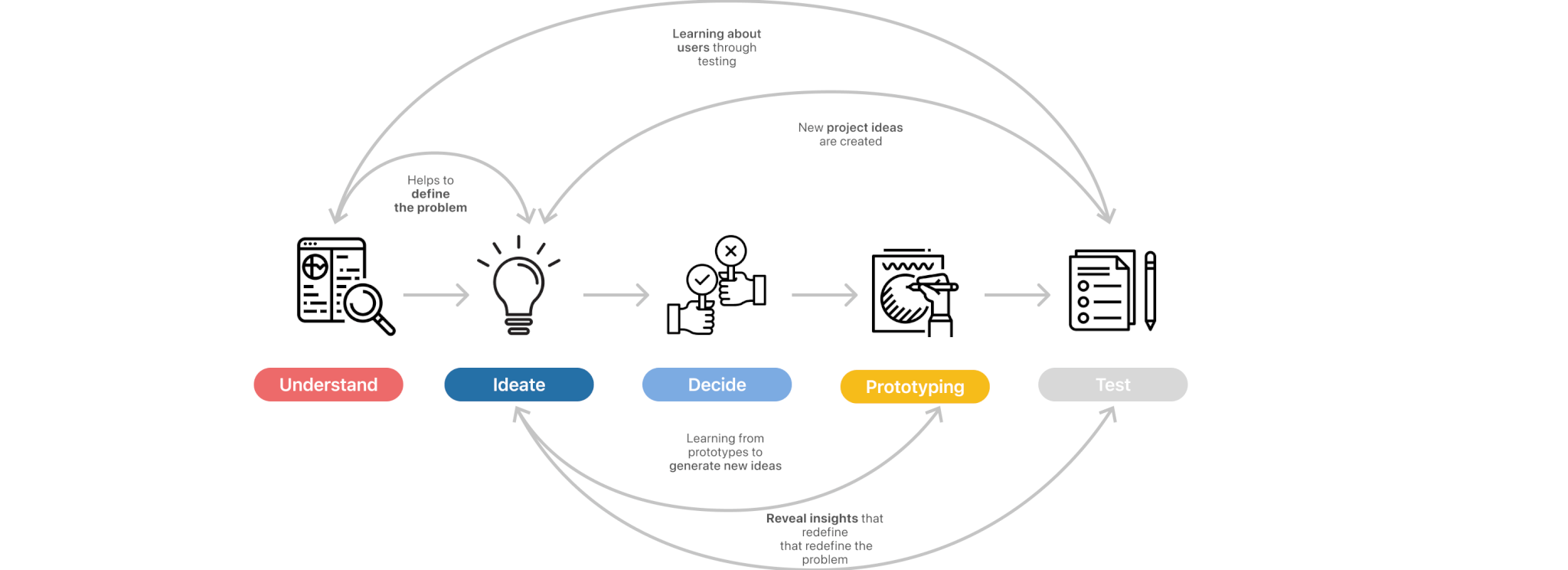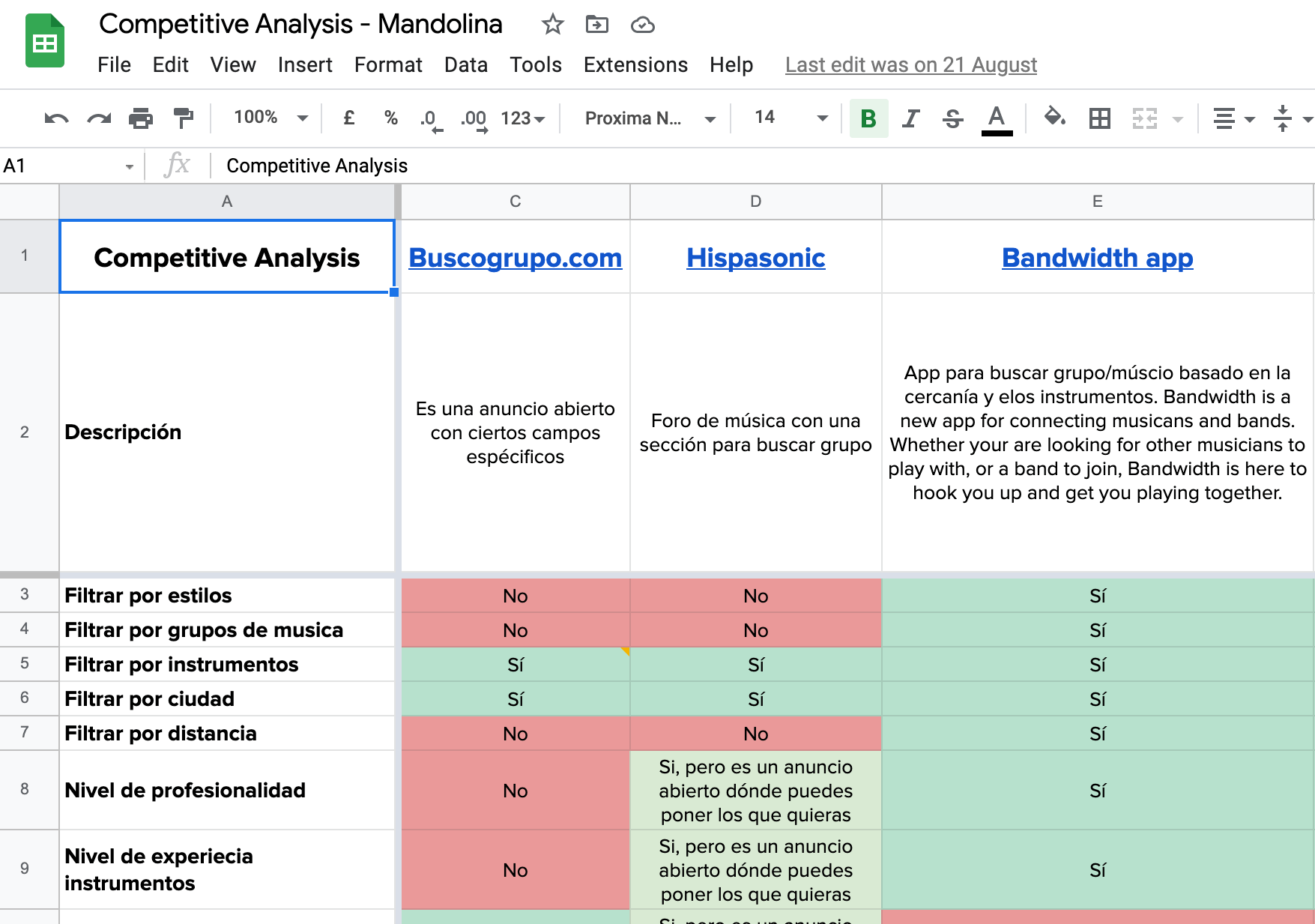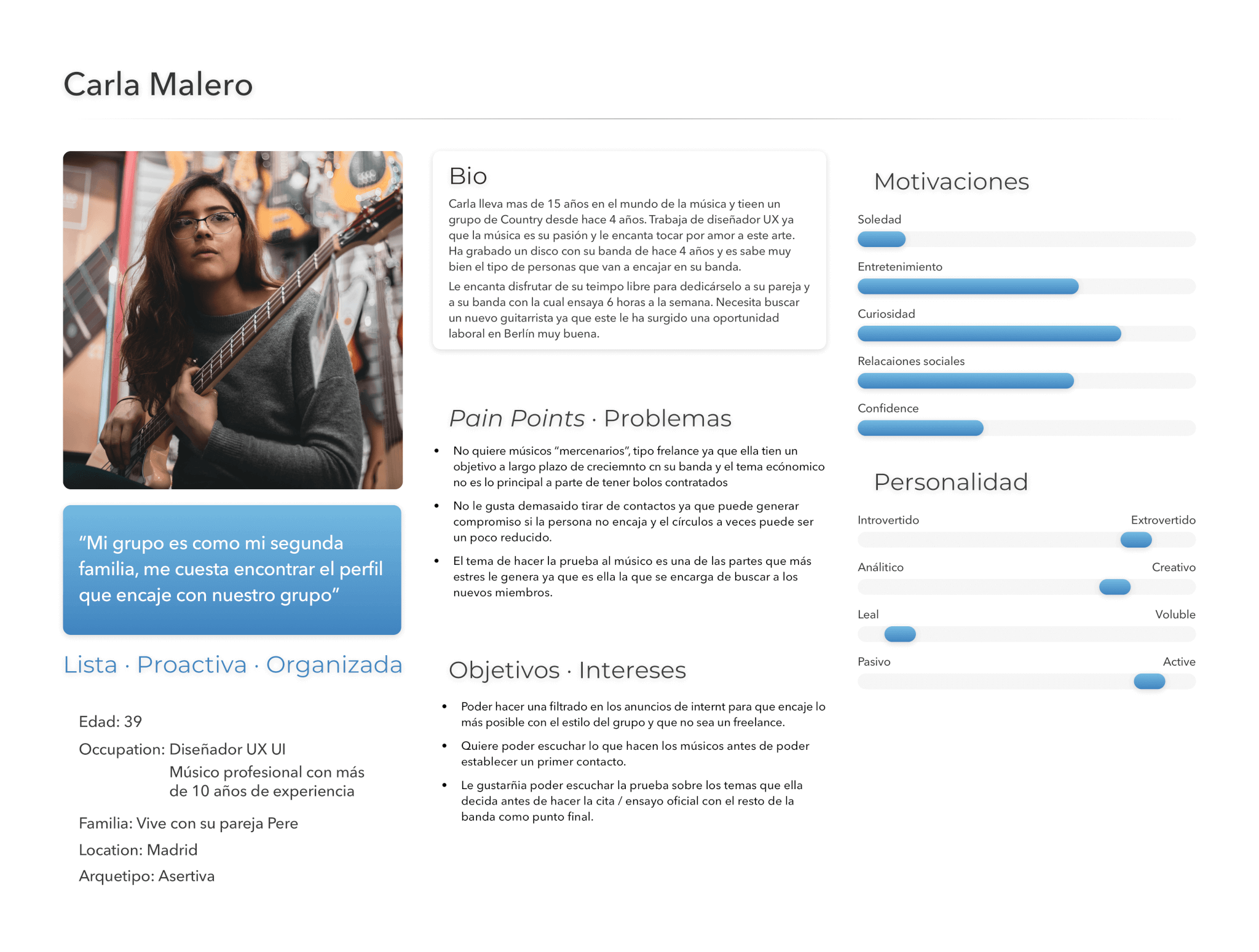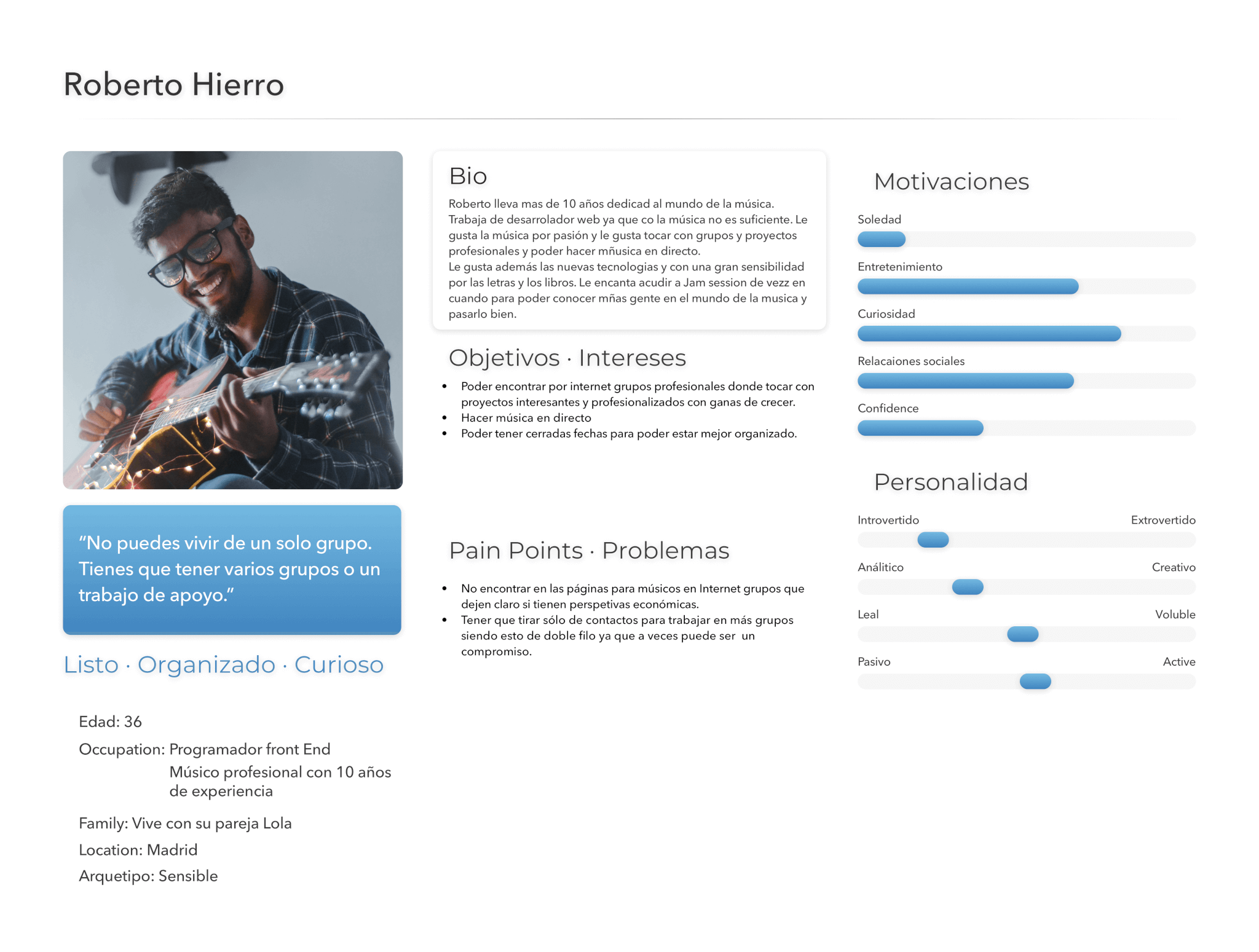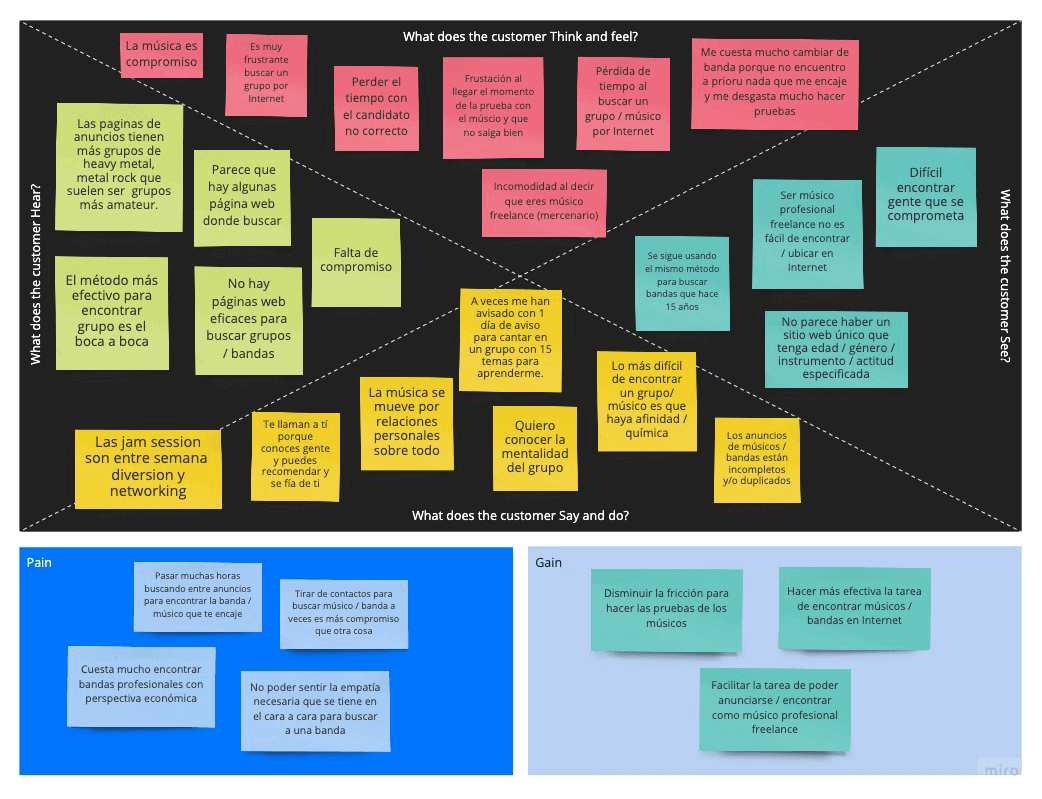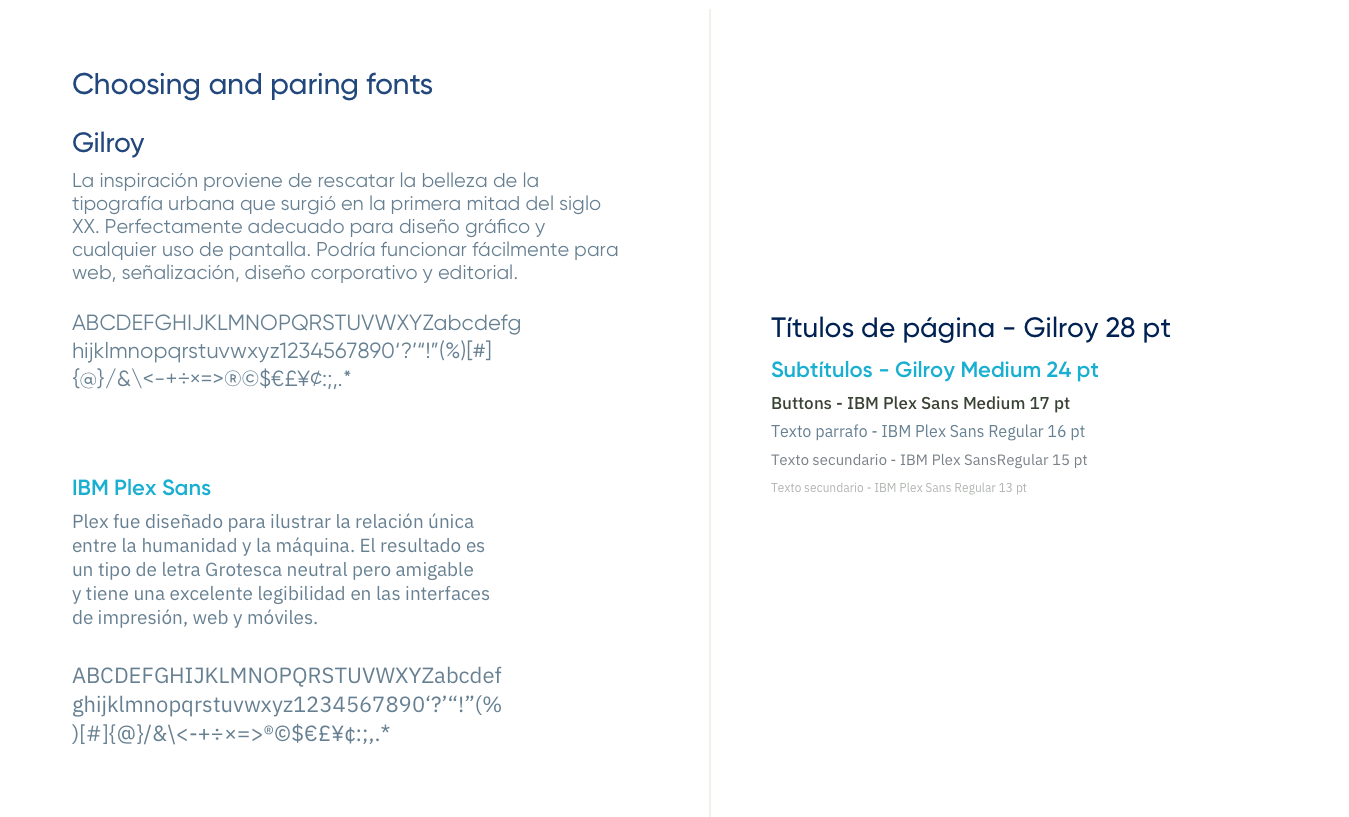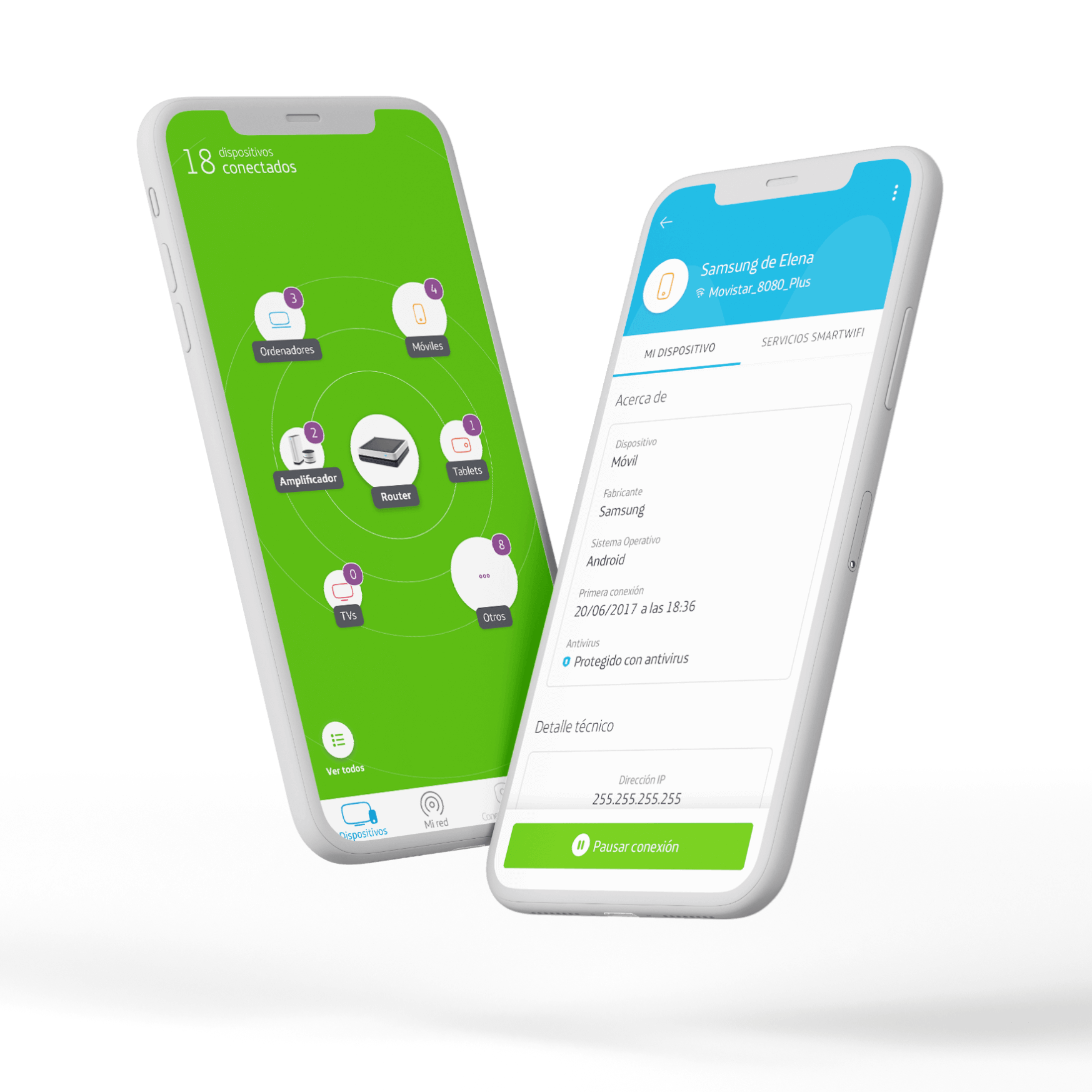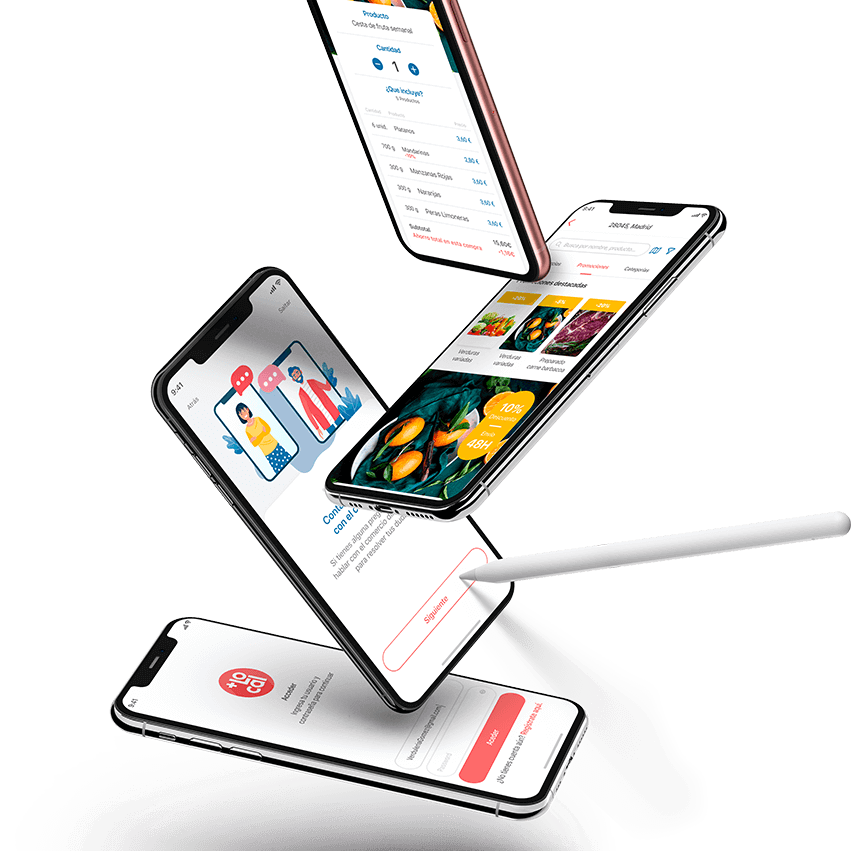PORTFOLIO
How are the musical profiles and the musical world
It is still a tiny circle where everyone knows each other and makes synergies of many kinds. Not having an apparent separation between work and artistic discipline makes it difficult to make professional/commercial transactions.
Example
They contact a musician (and they are acquaintances and friends) for the production of an album, and one of them tells him not to charge him and the person he contacts wants to pay him. Another example would be when it is established that they are «favours»—complicating, sometimes, these relationships.
Target and audience
Disciplines and methodologies
Duration
Solution. Musicians and bands need help finding what they are looking for because of lousy filtering (no specific filters and incomplete ads).
Main functionalities
The user can upload auditions to the platform.
- The process of finding a musician usually consists of two tests. The second one was with the whole group. In this way, you can speed up this process.
- The musician/band will have their profile where these auditions will be saved to be listened to by the rest and other musical themes they want to upload.
Optimised and customizable search filters
- These would be the filters that Mandolina will include based on the data from the surveys and interviews.
- Level of the musicians, if there is an economic purpose and the distance between the musician and the band.
- Visibly differentiate between musicians who play for personal development and those who play for economic exchange of services (known as mercenaries).
- If the musician has his/her equipment and a description of it, if possible.
Main functionalities
The user can upload auditions to the platform.
- The process of finding a musician usually consists of two tests. The second one was with the whole group. In this way, you can speed up this process.
- The musician/band will have their profile where these auditions will be saved to be listened to by the rest and other musical themes they want to upload.
Optimised and customizable search filters
- These would be the filters that Mandolina will include based on the data from the surveys and interviews.
- Level of the musicians, if there is an economic purpose and the distance between the musician and the band.
- Visibly differentiate between musicians who play for personal development and those who play for economic exchange of services (known as mercenaries).
- If the musician has his/her equipment and a description of it, if possible.
Design Thinking Methodology to address the problem
Problem to solve. Finding a new band member
Personal and musical affinity, the most critical aspect of this process
The search process needs to be digitised.
- The most effective method is still word of mouth.
- They don’t usually use the internet to find musicians/groups, and they prefer to contact acquaintances because they have references directly.
Although there are multiple websites and applications for this purpose, they do not fulfil their function because the ads are complete with providing the necessary information. The task of searching and filtering becomes very cumbersome. In addition, the COVID-19 situation has complicated this face-to-face search process.
Preliminary data collection and insights obtained.
Quotes from interviews and revealing survey data
The hardest thing about finding a band/musician is that there is affinity/chemistry.
Personal relationships, above all, drive music
The most important thing to finding a band/musician is affinity/chemistry.
They call you because you know people, can recommend them and trust you.
A musician can be considered a professional and not make a living from it.
The hardest thing about finding a band/musician is that there is affinity/chemistry.
Personal relationships, above all, drive music
The most important thing to finding a band/musician is affinity/chemistry.
They call you because you know people, can recommend them and trust you.
A musician can be considered a professional and not make a living from it.
How to look for
Musician auditions
Pages on the Internet
The most important thing
Friction points were encountered during the interviews.
- Two possible major classifications: Those who play for personal development and those who play with the economic exchange of services.
- The most important thing when looking for a group is empathy with it—followed by the level of the musicians, whether there is an economic purpose and the physical distance.
- Musicians usually find bands (and vice versa) through acquaintances in their environment (there is more affinity) and in cases of emergency if they can pull the internet.
- One of the reasons why word of mouth or personal relationships work so well is because the degree of affinity is high, for example:
- Recommendations from friends, since there is already a previous affinity and also coincide in musical tastes.
- Recommendations from Mentors or teachers to join a group since the mentor knows a lot of people.
- Two friends who work together play paddle tennis together and discover that they both play instruments and meet up to play. Friction overcome!
- The most friction is trying someone new, with no references from anyone, since the most challenging thing is to find an affinity with the person who introduces themselves.
- This is difficult for both bands looking for musicians and musicians looking for bands.
Competitive analysis of existing sites
Weakness Points
(opportunity)
- Text box to fill in what you are looking for / want to find without specific fields (the most used website).
- There is no page dedicated exclusively to the search for artists, and it is usually a secondary element (it would be necessary to analyse the revenue of these pages)
- There are no specific filters, or they are precarious.
Points in common
(Possible competition)
- Creation of profiles (in some)
- Upload music as a link from Youtube / Soundcloud
- Ability to select economic purpose field Yes / No (mercenaries)
Proposed solution: To be able to audition musicians virtually.
- Our solution hypothesis and validate it later through testing – Lean UX Canvas.
- Potential solutions to friction points of our users – Affinity diagram
- Empathise with our users and find their real needs – Empathy Map
Hypothesis 1:
Musicians and bands use the internet to contact musicians or bands (in need of professional musicians) thanks to musicians having on the platform a sample of what they play in the form of video or audio to help with auditions thanks to functionality to upload proofs (audio/video) of musicians and bands uploading their tracks (audio/video).Hypothesis 2:
Musicians/bands use the internet to contact musicians/bands who need Musicians who want to join a band and save time when searching for a band/musician by looking at ads thanks to a good pre-filtering of what they need from a musician profile according to your preferences.
Potential solutions to our users' pain points
User Persona. Bands are looking for musicians.
Empathising with our users to fine-tune our solutions
Friction points
- Spending many hours searching ads to find the band/musician that fits you.
- Using contacts to find a musician/band is sometimes more of a commitment than anything else.
- Difficult to find professional bands with an economic perspective
- Not being able to feel the empathy you need in a face-to-face meeting to see a band
What users want to alleviate
- Decrease the friction of auditioning musicians
- To make finding musicians/bands on the Internet more effective.
- Facilitate the task of being able to advertise/find a professional freelance musician.
First sketches of the design on paper and in digital version. Proceed first with the registration in small phases.
Proceed with registering musicians or bands in small phases before giving access to the website.
- Optimise and simplify the filters option to make it visually more intuitive.
- Make the online audition more intuitive.
Creation of the brand and final prototype
Colour choice:
This combination that expresses strength, reliability, confidence and vitality helps us to create a solid, energetic, cheerful and optimistic brand image.
Typography:
The interactive prototype made in Figma
Mandolina’s primary functionalities are:
- Optimised and customisable filtering.
Including whether or not you are a session musician (formerly called mercenaries), if you have your equipment or the distance you live or want to travel. - Ability to upload auditions online
The user can create a profile where online auditions (either in video or audio format) that the band requests when selecting candidates will be saved.
What I have learned from this project. Lessons learned and next steps.
In the user testing part, the visual interface could have fit better with the type of digital products oriented to musicians—for example, Atiza, Melboss or Bandmix. Test a more aggressive and brutal interface.
Functionality feedback
Online audition functionality
They liked it a lot, but the process is not very flexible and lacks interaction capacity (many predefined and automatic phrases)—more freedom to write messages while avoiding personal sharing data.
Functionality Filters
The structure of the filters is fine, especially if there is economic interest (mercenaries), knowing if the musician has his equipment and the location of both bands and musicians. The interface is straightforward but overwhelming, with all there is to choose from. Let’s split it into simple and advanced modes to keep users manageable.
Also, introduce if the musician is driven by economic interest, known in the industry as mercenaries—a vocabulary with a particular derogatory tone. After several tests with professional musicians, we opted for Session Musician, with a little explanation about the meaning of that name.
Next steps
- Launching a landing to test in the music world if this modality could be accepted, with the differentiating feature that musicians could do their first auditions online.
- Review the aesthetics of the site. The look and feel of this type of page are much darker and with a more metal aesthetic; garage, where according to one of the comments in the tests, you can breathe the sweat and the atmosphere of a garage with both concerts and rehearsal sites.
- Make the mobile version. Although mainly this tool will be used from a desktop or laptop (we deduced it from the interviews), we will need this website adapted to mobile devices, such as tablets and smartphones.
Let’s talk
Always open to hear about new projects.


